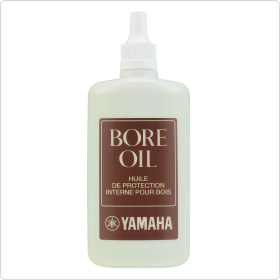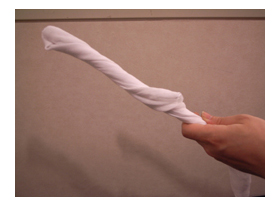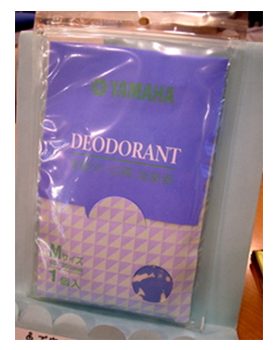Care and Maintenance of an Oboe
Seasonal maintenance
Rapid changes in temperature and humidity invite breaking!
Breakage, meaning cracks forming in the pipe of an oboe or other woodwind instrument, is a problem that often happens in the winter. The cold air outside or cool room temperatures greatly cool down instruments before they are played. However, human breath is the same temperature as the human body, around 36°C to 37°C. Therefore, when breath is blown into an instrument, the inside of the pipe is heated, rapidly raising the temperature. This causes the wood to try to expand outward. However, the exterior is shrunken because of the low temperature, and so sometimes the instrument is unable to withstand the temperature differences, causing cracks to form.
In addition to differences in temperature, rapid changes in humidity can also cause breakage, so players must be careful not only during the winter but also during rainy or otherwise humid seasons.
How do you prevent winter breakage?
To prevent breakage during cold periods, it is crucial to first take the instrument out of its case before playing and place it inside your coat to warm it with body heat. Always wait until the entire instrument has become adjusted to the temperature of the room before playing.
The part that most easily cracks is the part called the upper portion, which is near where the instrument is blown into and tends to be warmed by the player's breath. If the breakage is not obvious, you may not notice, so be sure to inspect your instrument from time to time. If you discover any cracks, bring the instrument in to a specialist shop for repair as soon as possible. The cracks will otherwise gradually expand, making the repairs more difficult. In the worst-case scenario, the instrument could even crack open.
Of course, even if the oboe does crack, it can be repaired. If there are large cracks, then the split part can be closed back up using screws, or the split pipe-body can be replaced. In either case, however, the instrument will not be the same as it was before, so these are not substitutes for prevention.
Use bore oil to counter humidity
Bore oil, which prevents the inside of the pipe absorbing moisture and the interior of the instrument warping, is recommended to counter the humidity that, along with changes in temperature, is one of the major causes of breakage. Bore oil is used after the moisture inside the pipe has been removed with a swab and the interior has been cleaned. Another swab is used for the bore oil; it is gently soaked in the oil and then spread around inside the pipe. The idea is to create an extremely thin membrane of bore oil on the surfaces of the interior of the pipe.

Bore oil for protecting the interior of the pipe.
If too much oil is applied, then it will seep out of the tone holes and damage the pads, so be sure to only apply a little.
If using a cleaning feather to apply the oil, do not use that feather for the regular task of cleaning out moisture.

The inside of the pipe is cleaned with a piece of gauze wrapped like this.
Put deodorant in the case during the rainy season
Deodorant is recommended for rainy seasons, and will eliminate any unpleasant odors just by being placed inside the case. Have an invigorating rainy season for both your instrument and your mind by using some.

Deodorant (for a small case)
If your instrument case grows mold
Just wiping away mold will not kill it. After making the case appear clean by wiping away the mold, sucking it up with a vacuum cleaner, or some other method, spray commercially available cleaning alcohol where the mold was until the fabric of the case's surface is wet. Afterward, close the case's lid, and the mold will die out after a few hours.
Once the alcohol inside the case has dried thoroughly, stow the instrument.
Musical Instrument Guide:Oboe Contents
Structure
How to Play
How the Instrument is Made
Choosing an Instrument
Trivia
- Why does the oboe lead the orchestra in tuning?
- Do the reeds have a front and a back?
- The keys recoil via springs!
- This is how the oboe and the cor anglais differ
- The charumera was the oboe's cousin
- You can reduce time spent breathing using circular-breathing techniques?
- The Wiener oboe that survived an existential crisis
- Oboe masterpieces: concertos
- Oboe masterpieces: chamber music
- What is the alto oboe?
- The heckelphone, which resembles the oboe
- The oboe is the bassoon's cousin
